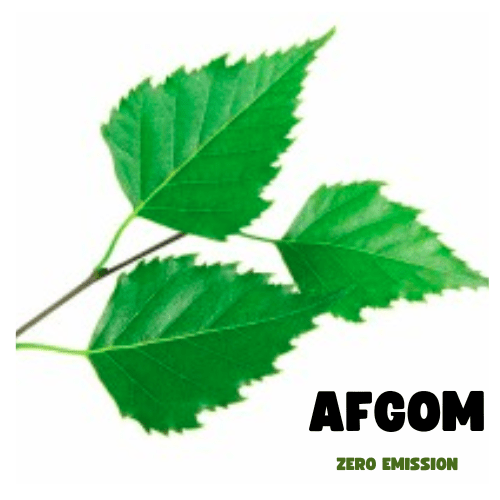
3 REASONS WHY THE AFGOM FLUE GAS PURIFICATION METHOD IS NEEDED?
The world’s biggest problem is the damage to the environment caused by the burning of fossil fuels in industries. An increasingly important and growing need is to produce energy in such a way as to preserve our clean living environment and the good health of people.
At the moment, there are no serious alternatives for the complete replacement of fossil fuels by 2030. According to EIA (US Energy Information Agency) studies, the use of fossil fuels will not decrease significantly even by 2050.
Afgom OÜ has created an effective method that surpasses many other solutions on the market. Important advantages compared to alternative methods are given below:
1. Safe, cost-saving and convenient use.
2. Versatile flue gas and dust removal.
3. Environmental friendliness and valorization of residues as raw materials for industries.
Let’s take a closer look at these advantages:
1. Safe, cost-saving and convenient use.
The purification of flue gases from harmful substances (primarily acid gases SO2 and Nox, CO) is carried out today by three different methods, which differ from each other in the aggregate state of the reagent/sorbent used. Dry, semi-dry and liquid technologies are distinguished for flue gas purification.
Afgom OÜ’s method belongs to liquid technology, where flue gases are cleaned with liquid.
Flue gas cleaning liquids in use today have corrosive properties and high corrosion activity, which is why their use is limited.
Afgom OÜ’s method is based on a reagent solution that is neither toxic nor corrosive. The method does not require the user to use more expensive special materials to build the cleaning apparatus. Therefore, there is no danger to both users and the environment, and it has a positive effect on the user’s time and comfort of using the equipment. It is a sustainable technology that offers an effective result, but at the same time does not endanger the environment or human health based on the composition of the reagent and is cost-effective.
2. Versatile removal of flue gases and dust.
Today, flue gases are mostly separated from one hazardous substance at a time, and therefore this process is time-consuming. In addition to carbon dioxide, the burning of fossil fuels produces substances dangerous to the environment and human health, such as sulfur dioxide (SO2), nitrogen oxides (Nox) and carbon monoxide (CO). After the emission of flue gases, dust flies into the air, which pollutes the environment and causes various health problems.
The developed method offers an effective solution for removing both flue gases and dust from the air. Because of its versatility, companies can solve multiple air pollution problems with one effective solution more effectively than with other methods.
3. Environmental friendliness and valorization of residues into raw materials for industry.
One important problem in the industry is the one-time use of toxic residues or used reagents and the frequent disposal of the solution, which makes our living environment more and more uninhabitable.
One of the unique features of the Afgom method is the multiple use of the reagent solution. After each use, the reagent solution is regenerated or cleaned of harmful substances by adding a regenerating agent.
The reagent regeneration process takes place near the area of reagent use and does not require special conditions and location. This kind of reuse of the reagent solution is beneficial both economically and from the environmental point of view, as it is much cheaper than the one-time use of the solution and does not have to be disposed of as often. This ensures the repeated use of the reagent solution, ensuring its long-term effectiveness through safe disposal.
All of the above emphasizes Afgom commitment to sustainable and environmentally friendly technology, emphasizing also the UN’s global sustainable development goals such as good health and well- being(3), clean water and sanitation (6), affordable and clean energy (7), industry, innovation and infrastructure (9), sustainable cities and communities (11), responsible consumption and production (12), climate action (13), life below water(14), life on land (15), partnerships for the goals (16).
How does the Afgom method differ from competitors?
Afgom OÜ’s flue gas cleaning method, based on an effective reagent solution, has a versatile ability to absorb or remove various flue gases and dust in one process, and is environmentally friendly, a combination that cannot be found among other methods in use.
The use of this technology is responsible and extremely efficient, making the method a preferred choice for companies that are required to ensure compliance of flue gases emitted into the atmosphere with the established norms and generate additional income for the company by selling the residual reagent product to industries.
Step towards a greener future with Afgom OÜ.
Afgom OÜ’s efficient, safe, cost-saving flue gas purification technology offers a unique solution for companies using fossil fuels with the potential to generate significant revenue.

How does flue gas purification technology help protect human health and the environment?
Flue gas purification removes pollutants such as sulfur oxide, nitrogen oxide, carbon monoxide and fine particles, which reach the environment and then into the human body, causing many serious health problems.
1. The Afgom method removes sulfur oxide from flue gases.
Sulfur Oxides (Sulfur Oxides) SOx includes various sulfur compounds such as sulfur dioxide (SO2) and sulfur trioxide (SO3), which are mainly produced during combustion processes, especially during the burning of fossil fuels such as coal and oil. When these substances enter the atmosphere, they cause air pollution and acid precipitation, which have negative effects on the environment and health.
Sulfur oxides cause the particles in the air to increase, causing fine dust pollution that damages the airways and causes breathing problems.
Sulfur oxides also react with water in the air to form acids that lead to acid precipitation (acid rain). This in turn affects forests, soil acidity and water ecosystems. More information about the problems of acidic soil can be found here.
Our increased demands on the sea for food, shipping as well for offshore renewable energy production, just to name a few, increase the pressure on the marine environment. This leads to pollution, biodiversity loss, seabed damage, over exploitation, spread of non-indigenous species, marine litter, underwater noise, and ocean warming and acidification.
2. The Afgom method removes nitrogen oxide NOx from flue gases.
Nitrogen Oxides NOx includes various nitrogen compounds, mainly nitrogen dioxide (NO2) and nitrogen monoxide (NO). They are formed in combustion processes under the influence of high temperatures and nitrogen-containing fuels (for example, gasoline or diesel fuel). NOx pollutants play an important role in air pollution and the process of damaging the ozone layer in the atmosphere.
Nitrogen oxides are partial air pollutants and react with other compounds in the atmosphere, contributing to the production of ozone. Surface ozone is an air pollutant that damages human airways and causes acute respiratory problems, especially in children and the elderly. Also, NO2 is carcinogenic, and long-term exposure increases the risk of chronic respiratory diseases, such as asthma.
3. The Afgom method removes carbon monoxide (CO) from flue gases.
Carbon monoxide (CO) is a colorless, odorless gas produced by the incomplete combustion of carbon-containing fuels such as wood, gasoline, coal, natural gas, and kerosene in simple stoves, open lights, wick lamps, stoves, and fireplaces. The main source of carbon monoxide (CO) in ambient air is from motor vehicles.
Carbon monoxide is a colorless and odorless gas produced during incomplete combustion. It can be dangerous because it binds to hemoglobin in red blood cells, preventing the transport of oxygen in the body and causing the risk of suffocation.
Carbon monoxide is particularly dangerous because it prevents the binding of oxygen in the blood, thereby affecting the transport of oxygen to the tissues. Short-term exposure causes difficulty breathing, exhaustion, dizziness and other flu-like symptoms. Long-term exposure leads to an increased risk of cardiovascular diseases such as heart attacks. A short-term high concentration causes acute poisoning and even death.
4. The Afgom method removes particulate matter (PM) from flue gases.
Particulate matter includes small particles that are airborne and can come from a variety of sources, including automobile exhaust, industry, combustion, etc. These particles are known to cause air pollution and have a direct impact on air quality and human health.
Particulate matter penetrate deep into the respiratory tract and bloodstream. It causes respiratory irritation, increases the risk of existing respiratory diseases and cardiovascular disease and even cancer.
Particulate matter pollution has a particularly large impact in cities where they are densely concentrated. In addition, fine particles damage plants and soil quality, thereby affecting ecosystems.
Afgom flue gas purification removes pollutants such as sulfur oxide, nitrogen oxide, carbon monoxide and fine particles from reaching the environment and then into the human body, thereby directly and significantly reducing human health problems.
Based on the above, some facts regarding health problems caused by flue gases according to the World Health Organization:
- Air pollution is responsible for 6.7 million premature deaths every year.
- Global air pollution accounts for 29% of deaths. Globally, air pollution it is estimated to cause about 29% of lung cancer deaths, 43% of COPD deaths, about 25% of ischaemic heart disease deaths and 24% of stroke deaths.
- In the year 2016, more than 99% of the population lived in areas where air pollution exceeds WHO air quality guidelines and 4.2 million people die each year due to ambient air pollution.
- An estimated 4.2 million deaths worldwide are linked to ambient air pollution, mainly from heart disease, stroke, chronic obstructive pulmonary disease, lung cancer and acute respiratory infections. Worldwide, ambient air pollution is estimated to cause about 16% of the lung cancer deaths, 25% of chronic obstructive pulmonary disease (COPD) deaths, about 17% of ischaemic heart disease and stroke, and about 26% of respiratory infection deaths.
